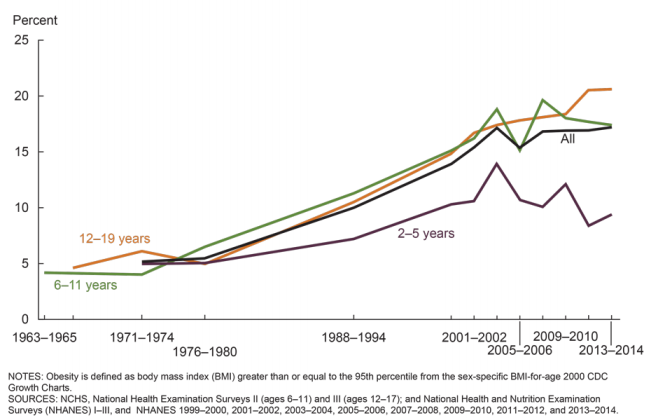Research Problem
In recent years, many countries have encountered the problems of obesity. “Globesity” has become a more serious problem than global warming. Globesity is a newly invented term to describe the problem of increase obesity rate worldwide. The U.S particularly ranks the 1st in terms of childhood and adulthood obesity. 35% of Adults and 15% of young people have the problem of obesity according to the National Center For Health Statistics(Ogden, CarrollFryar&Flegal, 2015).. As compared with adults, it is believed that childhood obesity has more research value. It is largely because through reducing childhood obesity rate, adulthood obesity can be significantly reduced thereafter. Hence, the major research problem is identified to be obesity-related lifestyles and behaviors among pre-school children.
Research Objective and Question
The objective of this research is to investigate the obesity-related lifestyles, diet and sleep behaviors among pre-school children. There are basically two research questions in guiding the research direction as follows,
1. To identify obesity-related lifestyles, behaviors and diets among pre-school children
2. To investigate the relationship between the behavior clusters and Obesity rate
Research Significance and anticipated outcome
Through conducting this research, it is more feasible for researchers to understand major causes which leads to the problem of childhood obesity. The outcome of the research can be used to advise parents to adjust the children’s lifestyles, diets and sleep behaviors in order to prevent childhood obesity. Besides, private sector can also find business opportunities in correcting or addressing children’s obesity-related behaviors and lifestyles.
List of Secondary Data
The general trend of the increase in childhood obesity in the U.S can be illustrated through the data published by National Center of Health Statistics as shown in Fig 1. The data cited can be used to reflect why it is necessary to conduct the research.

Source Credit: Fryar, C. D., Carroll, M. D., & Ogden, C. L. (2018).
Fig 1: Trends in Obesity among Children and adolescents aged 2-19 years by age
Research Method Description
Generally speaking, this proposed quantitative research is about classification of children’s obesity-related lifestyle and determine which cluster actually leads to childhood obesity. As the aforementioned, the major objective is to identify obesity-related behaviors and investigate the lifestyles and behaviors with the problem of childhood obesity, cluster analysis will be more relevant in this research(Romesburg, 2004). Through analyzing secondary data and collecting primary data, four cluster will be defined first. Then, mean values of four lifestyle behaviors classified by clusters can be illustrated in the table below. Cluster 1 is characterized by earliest dinner time, least screen time and longest sleep time. Cluster 2 has same dinner and screen time but the sleep time is latest. Cluster 3 has latest dinner time and least screen time but shortest sleep hours. Cluster 4 has least hours for outdoor activities. Different lifestyles of research participants, namely preschool children, are compared and contrasted. Through cluster analysis, it is feasible for researchers to understand which cluster is actually leads to childhood obesity. SPSS software will be used to analyze the collected data through χ2 tests and analysis of variance (ANOVA).
|
Cluster 1
Mean (SD) |
Cluster 2
Mean (SD) |
Cluster 3
Mean (SD) |
Cluster 4
Mean (SD) |
P value comparing 4 clusters |
Adjusted significant level |
|
Dinner Time |
||||||
Playtime (Outdoor) |
||||||
Screen Time |
||||||
Sleep time |
Reference
Fryar, C. D., Carroll, M. D., & Ogden, C. L. (2018). Prevalence of overweight, obesity, and severe obesity among children and adolescents aged 2–19 years: United States, 1963–1965 through 2015–2016. (Google Public Data Explorer)
Romesburg, C. (2004). Cluster analysis for researchers. Lulu. com.
Ogden, C. L., Carroll, M. D., Fryar, C. D., & Flegal, K. M. (2015). Prevalence of obesity among adults and youth: United States, 2011–2014.